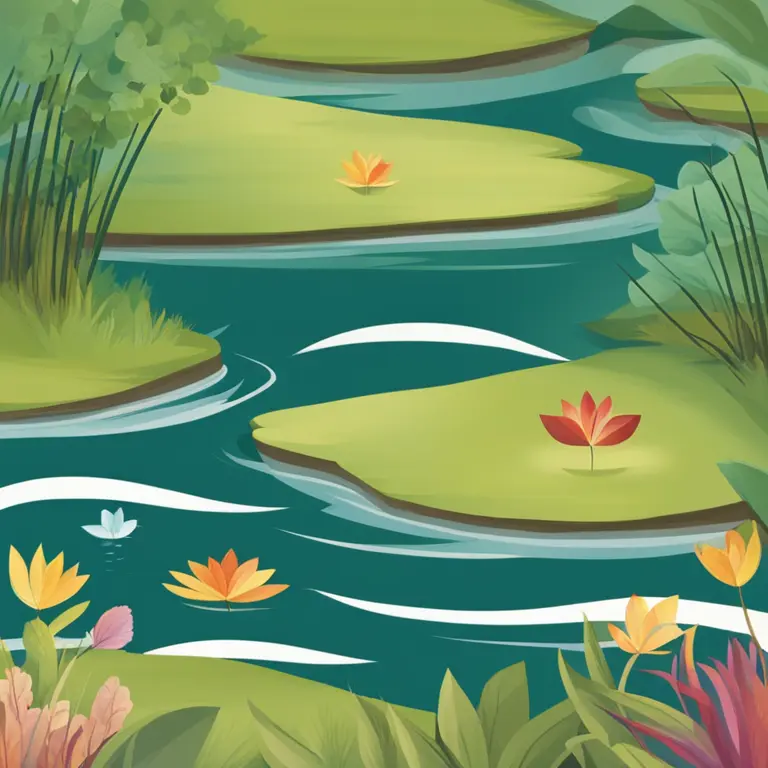
Mindful Tranquility: The Art of Meditation Beyond Imagery
Explore the depths of mindfulness and meditative practices free from the intricate webs of visualization. Embrace serenity through simplicity.
article by Hina Kurosawa
Defining Meditation without Visualization
In a world steeped in imagery, meditation has often been associated with visualizing calming scenes or guiding lights. However, the practice of meditation does not mandate the use of visuals. This form of mental exercise, sometimes known as non-visual meditation, involves focusing on elements other than visuals, such as breath, sensations, or audible cues. It's a welcome alternative for individuals who may find visual tasks challenging or distracting. Understanding that meditation is a flexible art form can be liberating for many, offering a path to mental clarity not bound by specific sensory experiences.

Breath as the Central Focus
One of the core practices of non-visual meditation is concentrating on the breath. Breath-focused meditation calls the individual to observe the natural rhythm of inhalation and exhalation. This method anchors the mind to the present moment and can serve as a powerful tool to calm the nervous system. As a constant and readily available point of focus, the breath can become a gateway to deeper levels of tranquility and awareness without the pressure of crafting detailed mental images.

Awareness of the Body
In meditation without visualization, bodily awareness takes center stage. A practice known as the body scan involves steadily bringing attention to various parts of the body, acknowledging sensations without judgment. This meditative journey through the physical self encourages a connection between mind and body that can lead to profound relaxation and self-awareness, opening the door to managing stress and facilitating healing without the need for complex visualization techniques.

Soundscape Immersion
Auditory elements can also play a significant role in meditative practices devoid of visualization. Listening to the gentle patter of rain, the rhythm of waves, or even the thrum of a buzzing city can ground one’s meditation. Tuning into the symphony of sounds that usually fade into the background of our consciousness promotes a different kind of focus, allowing practitioners to experience meditation through an acoustic lens.

Grasping the Silence
Alternatively, the pursuit of silence can be a powerful form of meditation. Here, the practitioner seeks to immerse themselves in the absence of distractions, including the intentional avoidance of visualization. Sitting in quietude, one may become more attuned to the space between thoughts, uncovering the subtle internal wardens of peace that reside beyond the sensory experiences.
Meditative Movement
For some, stillness is not the only path to meditative states. Movement-based practices like walking meditation, yoga, or tai chi emphasize the flow of physical actions in sync with breathing. These meditative techniques involve a focus on each movement, each moment, guiding the mind away from visual storytelling and into a state of dynamic, yet serene, engagement with the present.
Embracing Simplicity
Simplicity can be profoundly nurturing in a world brimming with stimuli. Meditation without visualization offers a stripped-down approach to mindfulness. Without the embellishments of constructed imagery, practitioners can connect with a more authentic and immediate sense of self. The key to this practice lies in the acceptance of each moment and sensation as it is, without elaborate adornment, leading to a genuine encounter with the meditative state.
Published: 1/24/2024
Modified: 1/24/2024
More predictions
Come back here soon to learn more about yourself and your future


Meditation Techniques for Stress Relief Explored
Discover effective meditation methods to alleviate stress and foster inner peace in this concise guide for well-being.


Meditation Techniques for Individuals With ADHD
Discover effective meditation practices tailored for individuals with ADHD to improve focus, reduce hyperactivity, and foster a sense of calm.